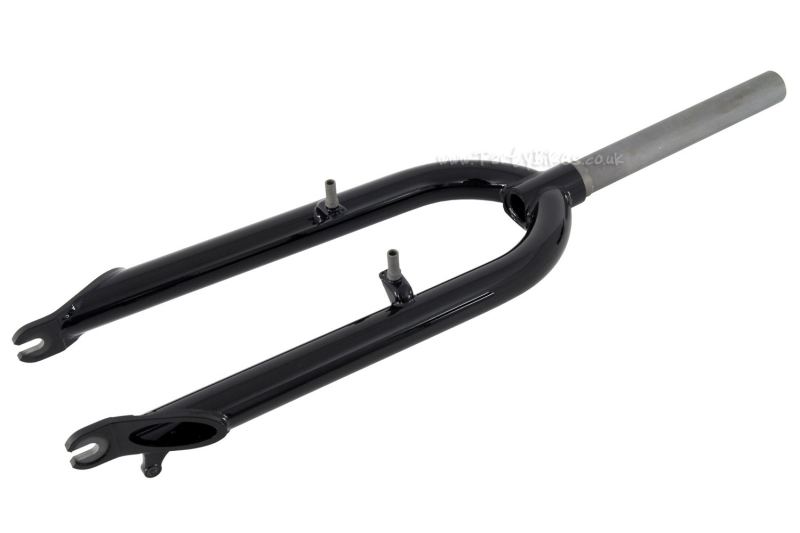kiltedcelt
100 W
I'm planning to build a cargo bike frame from scratch. The bike will be a long-john style cargo bike with the cargo in front of the rider, low to the ground with a 26" rear wheel and a 20" or 24" front wheel. Kinda like this:

Currently I have a 16T Mac motor in a 26" wheel on the front of a Yuba Mundo. Don't like how the Mundo handles with cargo on the rear deck (which is where I almost always have to haul my heavy, bulky stuff), so I'm building a whole new bike. The motor will get laced into the new front wheel which will be either 20" or less likely, 24". I need to have disc brakes because of the speed/torque of the motor as well as all-weather performance, and to stop the loaded e-assisted bike better than rim brakes. Problem is, there is very little in the way of 20" forks with disc tabs here in the U.S. You have to go overseas to UK/Europe websites to look for trials bike forks basically. I could just take a BMX fork and weld a disc tab on, or a kids bike fork, but I'd rather have a fork that's already built to take serious punishment and that means a trials bike fork. Who'd have thought that here in the U.S., land of "hold my beer and watch me do something stupid," that there would be absolutely NOWHERE here to buy a trials fork?! So, I already bought a fork from a UK seller but it's a P.O.S. (came with crappy welds and a bent dropout), so I'm in negotiations to trade up in an exchange to a higher dollar fork. Only problem is those higher dollar forks look to have dropouts that might not play nice with a geared hub motor. Right now I use two Grin Tech torque arms on both sides, but I've considered the next option being those torque arm dropout thingies that you actually epoxy permanently to the fork. Either way, what do you think of the forks linked below? I'm wary of the dropout that have a hole in them above where the wheel axle goes, and I'm also somewhat wary of the dropout design where the fork leg bottom is hollow. However, we're talking about forks that are made to withstand some serious force from jumping off of high objects or bouncing up onto things where the front wheel takes a direct, high amount of force which obviously heavily loads the fork/dropout area.




Currently I have a 16T Mac motor in a 26" wheel on the front of a Yuba Mundo. Don't like how the Mundo handles with cargo on the rear deck (which is where I almost always have to haul my heavy, bulky stuff), so I'm building a whole new bike. The motor will get laced into the new front wheel which will be either 20" or less likely, 24". I need to have disc brakes because of the speed/torque of the motor as well as all-weather performance, and to stop the loaded e-assisted bike better than rim brakes. Problem is, there is very little in the way of 20" forks with disc tabs here in the U.S. You have to go overseas to UK/Europe websites to look for trials bike forks basically. I could just take a BMX fork and weld a disc tab on, or a kids bike fork, but I'd rather have a fork that's already built to take serious punishment and that means a trials bike fork. Who'd have thought that here in the U.S., land of "hold my beer and watch me do something stupid," that there would be absolutely NOWHERE here to buy a trials fork?! So, I already bought a fork from a UK seller but it's a P.O.S. (came with crappy welds and a bent dropout), so I'm in negotiations to trade up in an exchange to a higher dollar fork. Only problem is those higher dollar forks look to have dropouts that might not play nice with a geared hub motor. Right now I use two Grin Tech torque arms on both sides, but I've considered the next option being those torque arm dropout thingies that you actually epoxy permanently to the fork. Either way, what do you think of the forks linked below? I'm wary of the dropout that have a hole in them above where the wheel axle goes, and I'm also somewhat wary of the dropout design where the fork leg bottom is hollow. However, we're talking about forks that are made to withstand some serious force from jumping off of high objects or bouncing up onto things where the front wheel takes a direct, high amount of force which obviously heavily loads the fork/dropout area.





